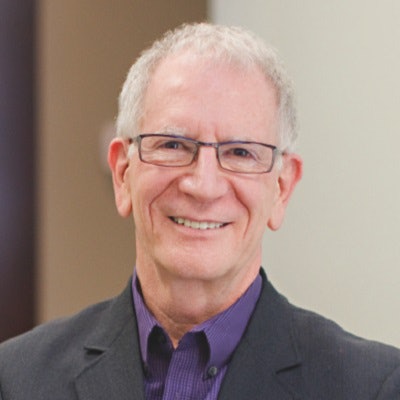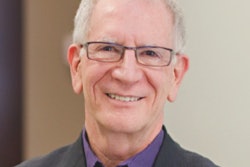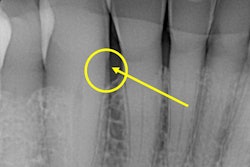
Smile. That's right. Just smile.
The first thing I want you to do in the morning is smile. Look into the mirror and show your smile. Feel it. Think about it. Smile as if your life depends on it -- because it does!
Even if no one else is around, just smile. Smile because it is a deep expression of yourself. It's an emotional attachment to humanity. It needs to have a life and be revealed.
It only takes 20 seconds. Smile with an enticing grin or a contagious, all-teeth-showing smile.
There may be no better way to set the tone of your day than grinning from ear to ear. Try it. It will make you feel elated and uplifted. You may start laughing -- all the better.
Throughout time, the magnetism of smiling has been respected and revered. In 1928, Larry Shay, Mark Fisher, and Joe Goodwin wrote the music and lyrics of their timeless song, "When You're Smiling (The Whole World Smiles with You)." Many artists have recorded it, but one of the most famous renditions was by one of the original entertainment masters. That was in 1929 by the acclaimed Louis Armstrong.
Science
There's science behind the anecdotal benefits of smiling. A smile is contagious to those around you. It can lift your mood and the mood of those in your presence. It also can improve longevity.1
The act of smiling activates neural messaging in your brain.2 The feel-good neurotransmitters in your brain are dopamine, endorphins, and serotonin and they are released when you smile. Smiling not only relaxes your body but also can lower your heart rate and blood pressure.
When you smile, you look good. Studies have demonstrated that a person who smiles is more attractive to others than a person who does not smile.3 You bring more people into your social circle and also impress employers and coworkers.
You can exude gratitude when you smile. In this time in the world when a pandemic and political diversity are abundant, take the time to be grateful for all that you have. When you smile, you can express that gratitude to others.
Smile and laughLaughter is one step beyond smiling. As a matter of fact, smiling and laughter have helped cancer patients.
In a 2017 study,4 56 participants with cancer were randomly assigned to either an intervention group (laughter therapy) or control group (no laughter therapy). Each participant in the intervention group underwent a laughter therapy session once every two weeks for seven weeks. Each session involved a laughter yoga routine followed by traditional Japanese verbal comedy performances. At the end of the study, the intervention group had significantly better cognitive function and less pain than the control group.
When it comes to laughter, camps for kids get the idea. There are camps around the country that encourage laughing to have a good time. These camps are designed to perfect the quality of laughing and engage kids to participate and have fun.
Beautiful examples are Laugh Factory Comedy Camp, Camp Laughing Child, and Laughing Buck Farm. Perhaps these camps need to expand for adults. We are never too old to learn to smile and laugh!
Smiling at my lifeSmiling for me is a new and worthwhile habit. To be honest, I never put much thought into smiling just to smile.
Of course, in the past, I smiled when I was moved to smile, but I never just smiled to smile. I had no idea the power of smiling.
Since my diagnosis of incurable bone marrow cancer in 2018, I have had more than a handful of bouts of depression. I've fallen into the abyss of victimization for reasons that may not be too difficult for you to understand. But now, I have the might of smiling.
You're never too old to learn a new trick. The act of smiling has been a surprising and amazingly helpful tool for me. Most of the time, my smile is real. Sometimes, it's forced. However, all the time, it has helped me stay focused with a healthier forward outlook.
My recommendation for you is just to smile.
References
- Abel EL, Kruger ML. Smile intensity in photographs predicts longevity. Psychol Sci. 2010;21(4):542-544. doi:10.1177/0956797610363775.
- Lane RD. Neural correlates of conscious emotional experience. In: Lane RD, Nadel L, eds. Series in Affective Science. Cognitive Neuroscience of Emotion. Oxford University Press; 2000:345-370.
- Tkatchenko TV, Shah RL, Nagasaki T, Tkatchenko AV. Analysis of genetic networks regulating refractive eye development in collaborative cross progenitor strain mice reveals new genes and pathways underlying human myopia. BMC Med Genomics. 2019;12(1):113. doi:10.1186/s12920-019-0560-1.
- Morishima T, Miyashiro I, Inoue N, et al. Effects of laughter therapy on quality of life in patients with cancer: An open-label, randomized controlled trial. PLoS One. 2019;14(6):0219065. doi:10.1371/journal.pone.0219065.
Dr. Alvin Danenberg has retired from the private practice of periodontics in Bluffton, SC. He continues to be on the faculty of the College of Integrative Medicine and created its integrative periodontal teaching module. He also spent two years as chief of periodontics at Charleston Air Force Base earlier in his career. His website is drdanenberg.com.
The comments and observations expressed herein do not necessarily reflect the opinions of DrBicuspid.com, nor should they be construed as an endorsement or admonishment of any particular idea, vendor, or organization.



















